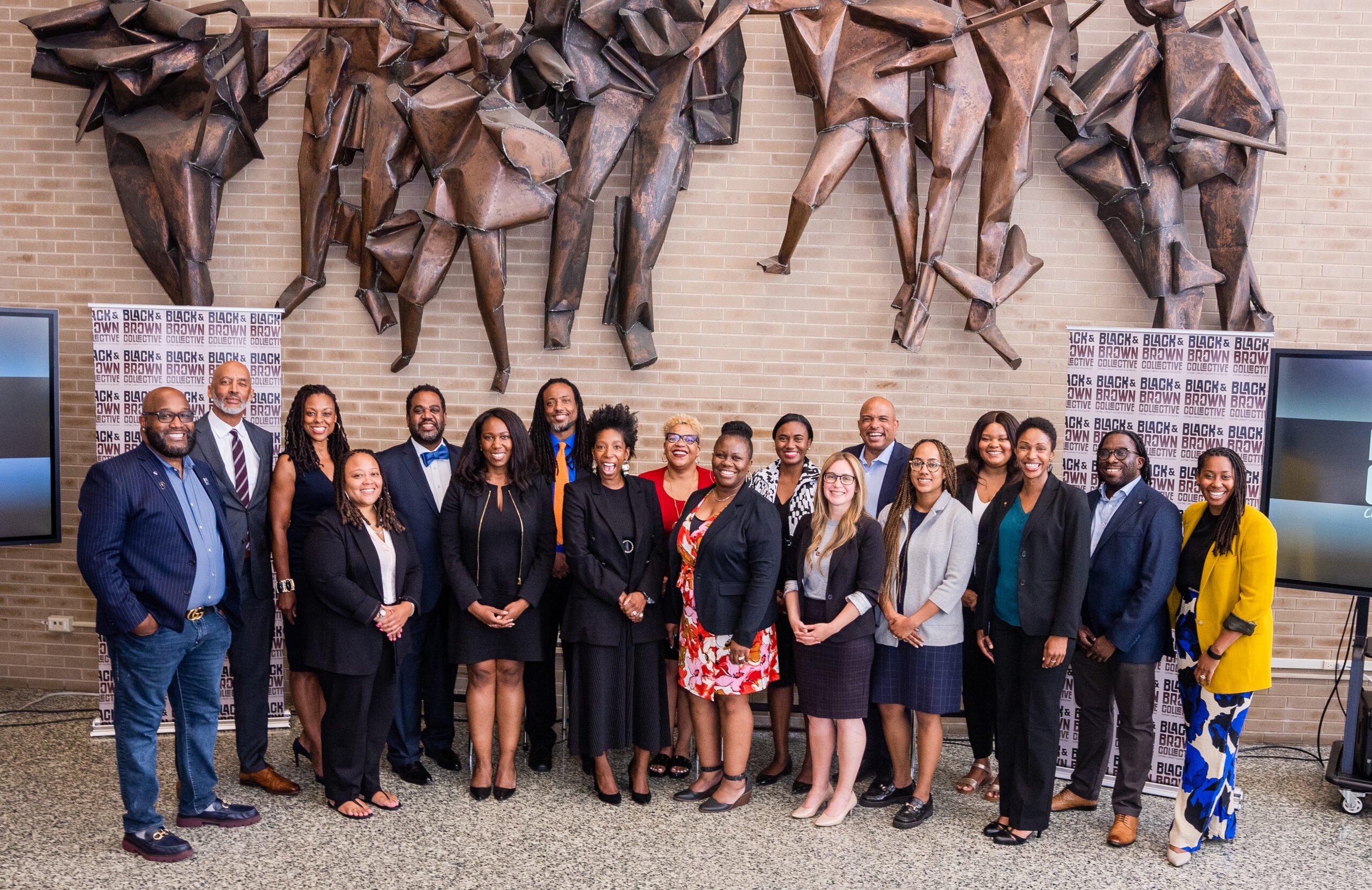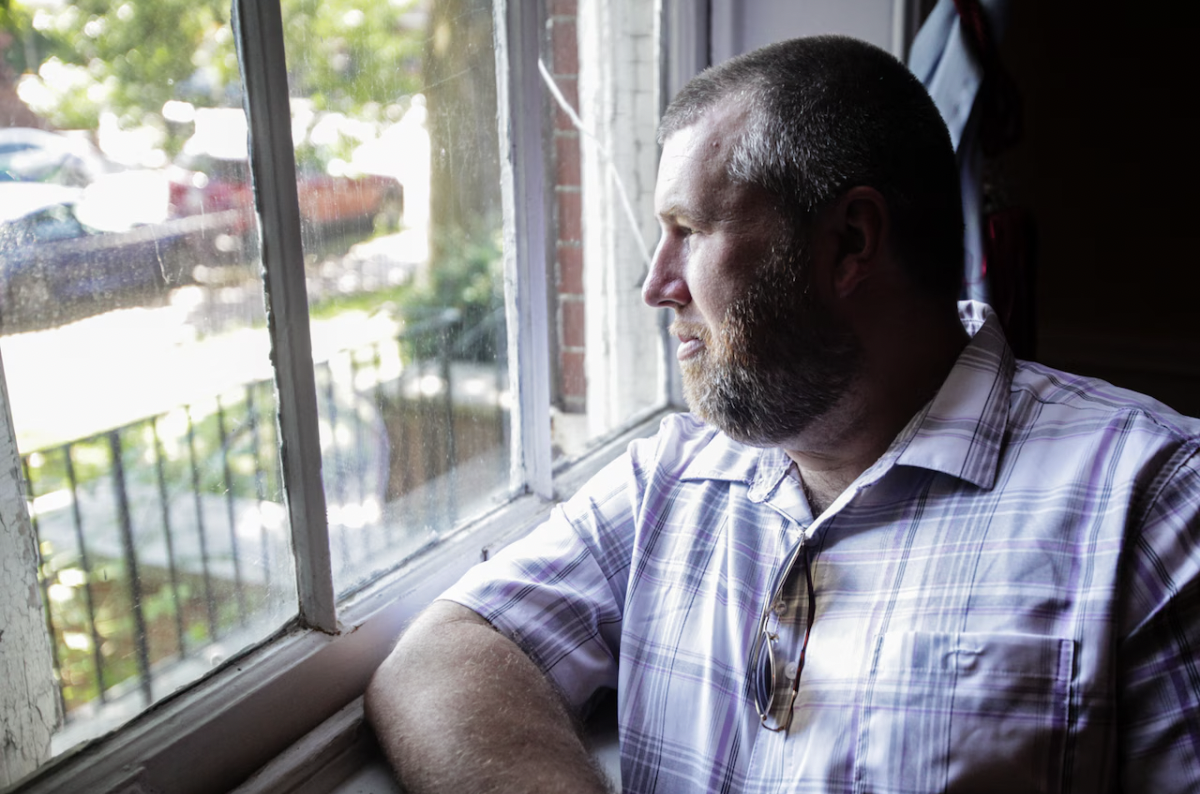It was a warm summer day in 2021 when graduate student Nazsa Baker got a phone call from a family member that would change her trajectory in urban health. Her older cousin had been shot twice as he left the local corner store, only a few houses down from their grandmother’s home in East Orange, New Jersey. Baker was familiar with this kind of shocking news; she grew up in a community riddled with shootings, which had been her inspiration for pursuing violence prevention work. But her relative’s shooting focused her on the other side of that field: what life is like in the aftermath.
When she got the call, Baker remembered her 35-year-old cousin as a child, running inside their grandmother’s house after being startled by the sound of fireworks, an instinct borne of an upbringing amid gunshots. He survived the shooting, and during his recovery, Baker was able to use her expertise to provide him with information on accessing hospital intervention programs, an often difficult process for survivors to navigate as they heal.
The tragedy in Baker’s family was personal, but it coincided with a pivotal moment: just two years earlier, after decades of political hostility toward federal funding for gun violence research, Congress allowed the Centers for Disease Control and Prevention and the National Institutes of Health to fund those studies for the first time since 1995. The shift in resources has led to more diversity, Baker said, in both the demographics of researchers and the topics of the research itself. By increasing the number of opportunities for researchers who’ve experienced gun violence, a growing body of research reflects a better understanding of what makes marginalized communities vulnerable to it. Black adults are 10 times more likely than their white peers to die by gun homicide; Black kids in America are nearly four times more likely to die by gunfire than white kids; and suicide by firearm is increasing among Black youth, recent research shows.
“For a lot of us when we are doing this research, it’s personal,” Baker, who is now a postdoctoral fellow at Rutgers’ New Jersey Gun Violence Research Center, said recently of the importance of racial diversity in firearms research. “We either had someone affected by firearm violence that we know, or communities that we come from have been impacted, and things can happen at the drop of a dime.”
After struggling for decades to advance their work, experts of color are beginning to close what has long been a notable deficiency of diversity in their field. They are contributing to effective interventions, prevention, and community involvement in solutions. And as they push against the historic disparities within their respective institutions, they are finding support through a burgeoning national network of gun violence researchers — the Black and Brown Collective, launched last year by Dr. Shani Buggs, professor at the Violence Prevention Research Program at UC Davis. To date, the collective supports around 30 Black and Latino gun violence researchers, providing tools for navigating the field, as well as a sense of community.
“The Collective was formed out of frustration, passion, and promise,” Buggs told The Trace in an email. “While the field of gun violence research has been abysmally small compared to the magnitude of the problem, there are even fewer researchers in the field with ties, relationships, and even direct experience in communities with persistent, elevated rates of gun violence.”
The changing landscape brought on by the CDC funding has led to more diverse scholarship that evaluates interpersonal violence, domestic violence, and policing, forms of firearm violence that disproportionately affect women and people of color. From Baker’s perspective came a dissertation on Black male survivorship in hospital-based violence intervention programs, followed up by a recent research article she co-authored, published last month in The American Journal of Men’s Health. The study explored the quality of life of Black men with gun violence-related injuries, a largely under-researched group. Nearly a dozen qualitative interviews found that the disabilities among this group negatively impacted their perception of their manhood and masculinity.
“I understand that Black men, especially those who are suffering from a firearm-related disability, are hyper-invisible in research,” Baker said. Her work on the health of Black men — bringing them from margin to center — is a direct result of the visibility of the established cohort of researchers in the collective, she said. That dynamic helped her “understand my positionality and intersectionality as a Black woman researcher, researching Black communities.”
Baker’s primary mentor is one of the chairs of the collective, Joseph Richardson, and much of his work reinforces understanding the role of identity in the field. A Philadelphia native, Richardson grew up in a single-parent, working-class family in the 1980s and 90s, decades marked by a devastating increase in citywide firearm violence that was soon inextricable from his youth. He watched as the violence intensified in a few short years and his nearby Black community fell apart.
“Seeing the first person in my neighborhood get shot during the crack era, and watching the aftermath of what the shooting did to him. He just kind of became a zombie, and ultimately he was the first person I knew who was killed on my block,” recalled Richardson, who is a professor of African-American studies, medical anthropology, and epidemiology at the University of Maryland. “That’s the sort of period I came up in.”
In the 90s and early 2000s, Richardson was getting his postgraduate degrees and spent years as an ethnographer in Harlem’s housing projects, some of the most dangerous in the country at the time, work that he recalls with great pride and describes as his “foundation to understanding gun violence as a public health issue.” When he entered the field 25 years ago, diversity in gun research, or even a collective concept of gun violence research as a field, was uncommon.
“When I started early on, the two people that I worked with at my university were Black: Dr. Carnell Cooper and Dr. Tanya Sharpe. Black people have always existed in this space, we have been here,” said Richardson. “We have always been here to support each other, but it has been difficult. That’s why the Black and Brown Collective is so important because it’s providing the space for people who have historically been sidelined.”
As Richardson’s work in the gun violence space was beginning, the field’s pedagogy was also being formed around gun violence prevention, and that moment in time coincided with the politicization of resistance to gun violence research. The 1996 Dickey Amendment deterred gun violence research for decades. While the amendment didn’t completely prohibit research on firearm violence, it created funding obstacles to any research analyzing the implications of firearm access and policy.
Gun violence research funding continues to face political challenges. Last year, House Republicans proposed an appropriations bill to eliminate all gun violence research funding at the Center for Diseases and Control and Prevention. The new effort, coming at the same time that diversity and inclusion practices in higher education are being challenged across the country, threatens the work that Richardson and others have been key to establishing.
“Researchers of color depend on mentors of color to support us, which is beautiful but also fundamentally inequitable because it puts a huge burden on faculty of color to mitigate the structural challenges,” said Jordan Costa, who lost her father in a shooting when she was 8 and now leverages her lived experience in her role as the senior project manager for Giffords Center for Violence Intervention. “Support for first-generation doctoral students with lived experience is a huge issue, and programs are often designed for people who have the liberty to solely focus on school and have had generations of access to education.”
Costa was introduced to Richardson and the public health approach to gun violence when she was in a college class where Richardson taught about his hospital intervention work. She was inspired to do similar work, particularly bridging the gap for Spanish-speaking victims of violence who struggle to access services because of language barriers. Costa is currently working on her dissertation, a process that was complicated by the pandemic and the difficulties that have arisen as a first-generation doctoral student still navigating the effects of her grief.
For Costa and other members of the collective, their identification with the crisis may be changing the nature of the research itself.
“A lot of the activism is not rooted in what we say, but the type of research that we do,” said Baker. “So those of us who are more qualitative, our goal is to tell the story, to ensure that it is from the perspective of the participants, and be respectful of those stories. I see that as a form of activism.”
Editor’s note: An earlier version of this story misquoted Jordan Costa, and has been amended.

